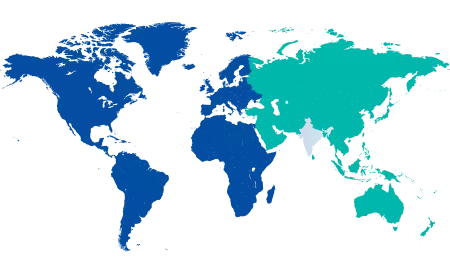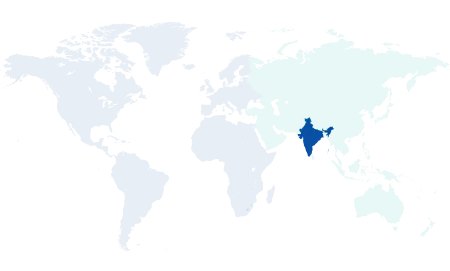-
Centre of
Excellence
Centre of Excellence
- Accident and Emergency Care
- Cancer Care/Oncology
- Cardiology
- Cardiothoracic Vascular Surgery
- Gastrointestinal Science
- Laparoscopic Surgery
- Liver Transplantation Surgery
- Nephrology
- Neurology
- Neurosurgery
- Obstetrics and Gynaecology
- Organ Transplant
- Orthopaedics
- Paediatric And Child Care
- Rheumatology
- Spine Care
- Urology
Other Specialities
- Allergy and Immunology
- Andrology
- Anesthesiology
- Bone Marrow Transplantation
- Children’s Airway & Swallowing Centre
- Clinical Psychology
- Dental Medicine
- Dermatology
- Diabetes and Endocrinology
- Ear Nose Throat
- Electrophysiology
- Fetal Medicine
- General Medicine
- General Surgery
- Genetics
- Geriatric Medicine
- GI Surgery
- Gynaec Oncology
- Hemato Oncology
- Hematology
- Hepatobiliary Surgery
- ICU and Critical Care
- Infectious Disease
- Internal Medicine
- Interventional Radiology
- Kidney Transplant
- Laboratory Medicine
- Lactation
- Medical Gastro
- Medical Oncology
- Microbiology
- Minimal Access Surgery
- Neonatology & NICU
- Nutrition And Dietetics
- Ophthalmology
- Oral Maxillo Facial Surgery
- Paediatric Cancer Care
- Paediatric Cardiology
- Paediatric Endocrinology
- Paediatric General Surgery
- Paediatric Intensive Care Unit
- Paediatric Neurology
- Paediatric Surgery
- Paediatric Urology
- Pain Medicine
- Parkinson Disease and Movement Disorder
- Pathology
- Pediatric Bone Marrow Transplant
- Pharmacy
- Physiotherapy
- Plastic And Cosmetic Surgery
- Podiatric Surgery
- Psychiatry
- Psychology
- Pulmonology (Respiratory and Sleep Medicine)
- Radiology
- Rehabilitation Medicine
- Renal Sciences
- Reproductive Medicine
- Robotic Assisted Surgery
- Surgical Gastro
- Surgical Oncology
- Transfusion Medicine
- Vascular and Endovascular Surgery
- Doctors
- Mukundapur
- International Patients



Clinics








- Self Registration
- Mars - Ambulance
- Corporate & PSU
- Insurance Helpdesk
- Awards And Achievements
- Careers
- Contact Us

Plasma Exchange Therapy
Plasma Exchange Therapy in Mukundapur, Kolkata
Therapeutic plasma exchange (TPE) is an extracorporeal technique used in the Paediatric Intensive Care Unit (PICU) to remove high-molecular-weight medications from the blood. Using specialised equipment, plasma is separated from blood cells during the treatment. The removed plasma is then replaced with a mixture of fresh frozen plasma (FFP) and albumin solution. The objectives of Plasma Exchange Therapy in Mukundapur, Kolkata, are to cleanse the body, control immunological reactions, and return plasma composition to normal. To maximise treatment outcomes, interdisciplinary collaboration guarantees safe and efficient management while keeping a high priority on the health of critically ill children receiving plasma exchange therapy in the PICU.
FAQ's
Generally, Plasma Exchange Therapy in children is indicated in the following conditions, such as:
-
Autoimmune diseases: These include autoimmune hemolytic anaemia, thrombotic thrombocytopenic purpura, and Guillain-Barré syndrome.
-
Neurological conditions: These include some cases of multiple sclerosis and acute disseminated encephalomyelitis.
-
Renal diseases: These include glomerulonephritis, which progresses quickly, and anti-glomerular basement membrane illness.
-
Haematological disorders: These include specific types of hemolytic uremic syndrome and thrombotic microangiopathies.
-
Toxicological emergencies: These include extremely serious poisoning, particularly when involving materials with large molecular weights or those bound to plasma proteins.
-
Severe infections: When linked to immune-mediated disease or circulating toxins.
Several autoimmune disorders can benefit from Plasma Exchange Therapy. Additionally, it can be used to treat the following ailments:
-
Multiple sclerosis: Multiple sclerosis (MS) is a disease of the nervous system that damages the sheath that surrounds nerve cells. This results in issues with the signals that regulate muscle movements being sent from the brain to the rest of the body
-
Dermatomyositis: This condition is characterised by weakness in the muscles of the shoulders, hips, back, and neck
The following are the sequential steps done during the procedure:
-
Catheter placement: Two catheters are placed into veins on the child's body at various locations
-
Blood extraction: One catheter is used to extract blood using a machine
-
Plasma separation: Plasma is separated from the blood using specialised devices
-
Addition of fluids or medicines: Fluids or drugs may be introduced to the plasma, depending on the state of the conditions
-
Reintegration: Plasma and blood are combined again in the process of reintegration
-
Blood Return: The second catheter is used to return treated blood to the child's body
-
Time: Depending on the child's condition, the procedure may take several hours and result in discomfort. Some children may need weekly treatments or more
The effects of plasma exchange normally wear off within a few months. However, it can provide a temporary increase in muscle strength after a few days of treatment. Recurrent plasma exchange is an option, although most symptoms should be managed with alternative drugs, avoiding the need for recurrent Plasma Exchange Therapy sessions.
Despite taking the utmost care during the procedure, there are some risks associated with it. A few of them are listed below:
-
Your child will have a special IV inserted into their arms, neck, or shoulder to connect them to the machine. Due to the small dimensions of their blood vessels, newborns' IV placements run with the possibility of breaking them.
-
IV access sites can get contaminated in children of all ages, leading to infections.
-
During treatment, a child's blood pressure may decline. Additionally, there is a chance of bleeding because Plasmapheresis reduces the blood's capacity to clot or automatically stops bleeding.
Although there are some dangers associated with Plasmapheresis, they can be managed, making the process generally quite safe. Here are a few dangers and adverse effects:
-
Decrease in blood pressure
-
Loss of consciousness
-
Dizziness
-
Blurred vision
-
Dehydration
-
Abdominal or stomach cramps
-
Bleeding brought on by anticoagulants, which are medications used during the surgery to prevent blood clotting
-
Allergy due to the syringes, gloves, or medication used during the procedure
-
Irregular heartbeat
-
Seizures
-
Weakened immunity
Plasma exchange does not weaken a child's immune system. Even while it temporarily clears the blood of some proteins and antibodies, it has little effect on immune system performance as a whole. However, because of underlying medical issues or immunosuppressive medications used in conjunction with the surgery, children receiving plasma exchange may be more susceptible to infection. To protect their health, it is crucial to keep an eye out for infections and take the necessary precautions both before and after plasma exchange sessions.
Although the process is painless, your child could feel exhausted after it. When the intravenous access catheter is inserted, your child might experience a little pain, but this will subside.
The idea of Dialysis, Plasmapheresis, and Plasma Exchange is the same: removing impurities from your blood. People who have kidneys that are not functioning properly use Dialysis to remove waste from their blood. Their bloodstream becomes clogged with waste materials. During Dialysis, medical professionals take your blood out of your body, purify it, and then administer it back to you.
Home Mukundapur Specialities Paediatric-intensive-care-unit Plasma-exchange-therapy



You’re on Our Indian Website
Visit the Global site for International patient services










